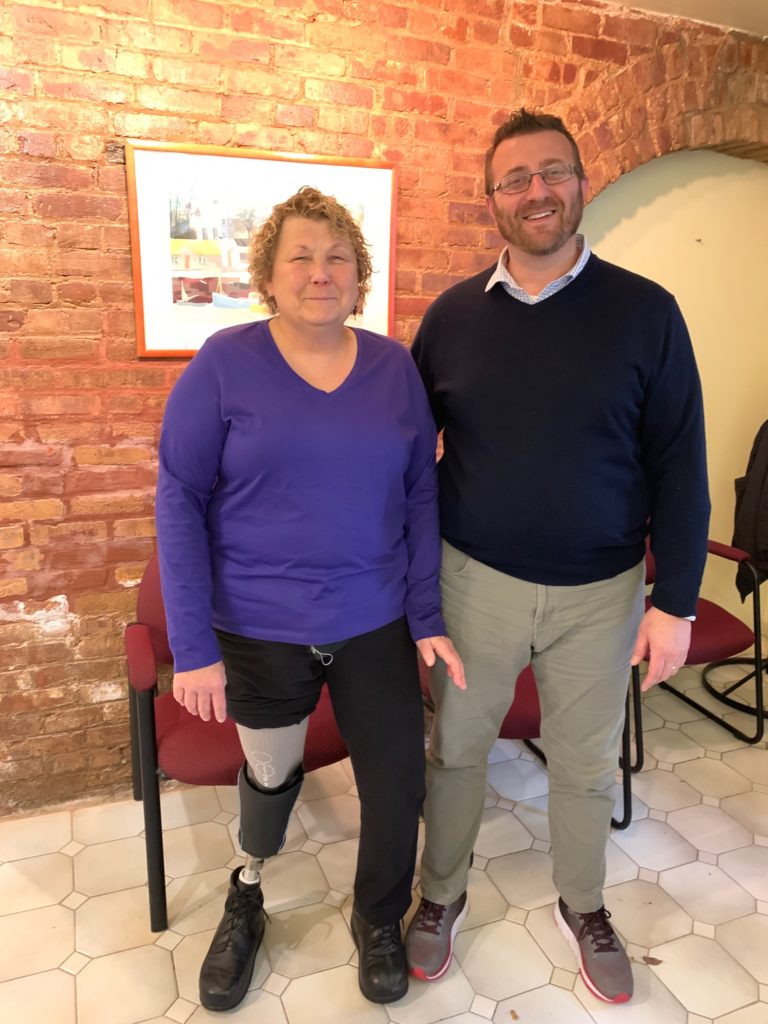The main draw of this industry is being able to get somebody up and walking again after they’ve had some sort of traumatic experience in their life. Whether it be lower limb loss due to trauma or a disease, an ability is taken away from them. I like the sense of giving that back to patients.

In 2002, I was fresh out of the military off of active duty Marine Corps and looking for a career that would be interesting and challenging. After making some phone calls, I ended up shadowing an orthotics and prosthetics company. From there, I started learning the industry from the fabrication side while working in the lab. Eventually I ended up going to Northwestern, first for orthotics and then for prosthetics. Ultimately, I decided prosthetics was the way to go.
The main draw of this industry is being able to get somebody up and walking again after they’ve had some sort of traumatic experience in their life. Whether it be lower limb loss due to trauma or a disease, an ability is taken away from them. I like the sense of giving that back to patients. Oakland Orthopedic Appliances is opening a new office location, which will allow for more patients to be reached. We are aiming to target patient populations as needed, and up north is an underserved area.
Once patients are in the office, a lot of initial encounters really serve to lay groundwork for an ongoing relationship in addition to the assessment of the current clinical situation. It’s worthwhile to get to know the patient, what their goals are for the future, how they see themselves as a prosthetic user. Really understanding how realistic the patient’s goals are and managing expectations while doing everything possible to get them there is so important. In the prosthetics industry, your patients aren’t one time patients–you’re building a pretty intimate and long-lasting relationship together. That relationship is crucial in order to properly advocate for the patient’s needs. There’s a lot of conversations that need to be had in order to figure out what patient and practitioner feel would result in the optimal outcome, from choosing socket type to selecting the suspension and components.
For the patients I’ve fit with LIM’s Infinite Sockets, I’ve been very happy with the outcomes. I’ve had a great experience working with LIM from the beginning, and was a huge fan of the Infinite TF from the get-go. Then there’s the transtibial socket which went through a redesign, and it has been vastly improved. It’s more aesthetically pleasing and less bulky; I have a few patients now on the new design who really love it. The Infinite Socket is a great option to provide in our area and makes us stand out as providing a niche service. I can stand by the product. In general, technology in the prosthetics industry has advanced so much. There’s new devices coming out every month to do different things or do to optimize current functions. The socket technologies and new materials being explored have incredible potential. LIM has been a part of that growth and is doing innovative design work.


